
BACKGROUND

As a part of our community based final thesis project, we traveled to Himachal Pradhesh for twelve days in February 2018. Four people and I were selected to go to Chherna, a tiny village on the mountains beyond Lohadi. Comprising of about fifty two houses, Chherna is a tiny village on the mountains, surrounded by snow clad peeks and Ulh river flowing right beneath. A breathtaking view that one might never forget, Chherna also comprises of some lovely people. Ever excited and uber friendly, this village welcomes you with open arms and curious minds.

Unlike a stereotypical vacation period, we visited Chherna in the cold month of February. The winter brought with it picturesque browns and golds. One could spot snow clad peeks in the vicinity while most mountains were covered with Pine and leafless trees. The winter landscape also gave rise to a very rustic and vintage color scheme. While one could spot browns and ochres evidently, the olive greens and blue hues added to the beauty of this place. Since people in Chherna do not paint their houses, these too contributed to over all look and feel of the place.
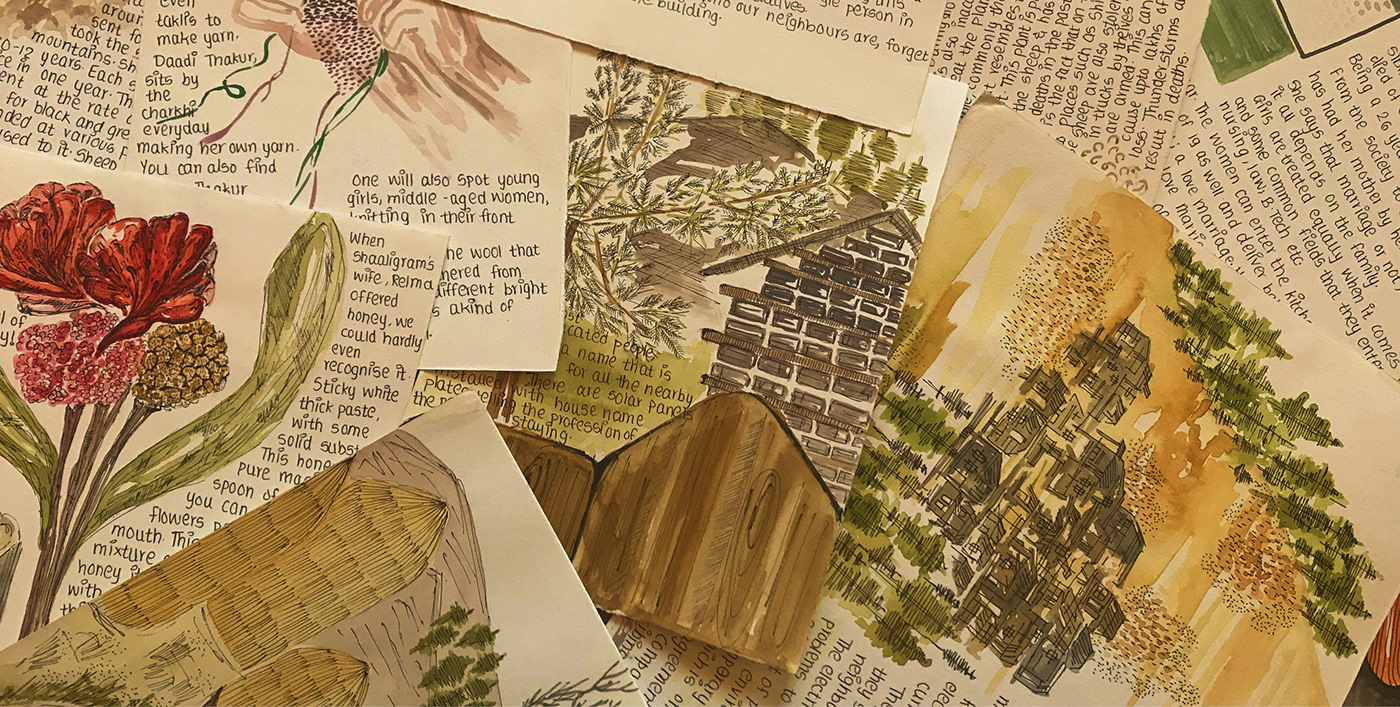
Reflecting on my own documentations which were done while I was in Chherna, I realised how most of their activities were carried out being in house with bare minimum necessities. They did not approach the market for every small need and want. Right from the food they ate to the clothes they wore, it was all done using the resources around them.
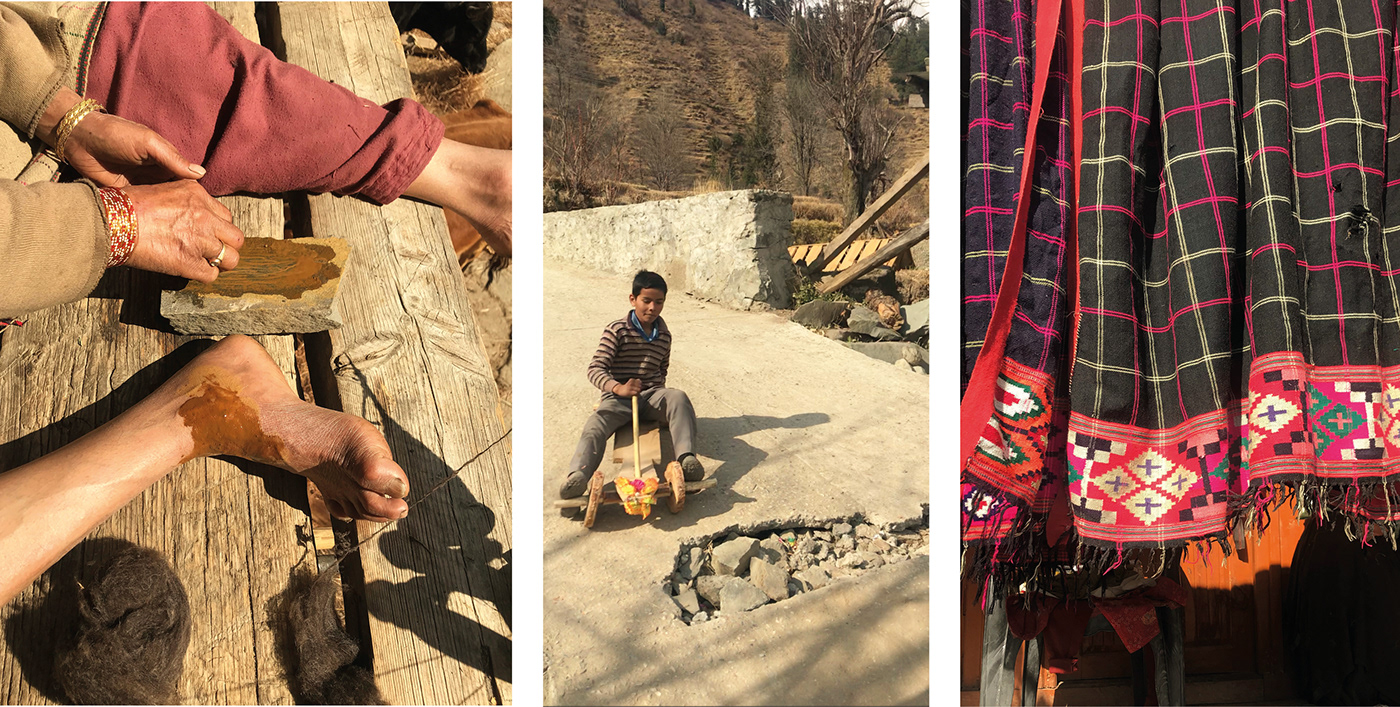
I noticed how each story was in fact making these people self-sustainable. Since it was all in house, this process also lead to minimal wastage of various resources. A very simple example being corn heads. To heat the water these people use the eaten waste corn heads to produce fire. This not only gets rid of their waste but also avoids usage of gas and other hazardous substances. The honey they eat is also produced in house, in the little boxes made for the honey bees. The ash from the bonfire is used to clean the utensils. Apart from these, the pictures above show a medicine acquired from a type of wooden bark, a hand-made wheel cart used for recreational purposes and a handwoven woolen pattu. All these little things make them self sufficient and independent of the market.
PROCESS
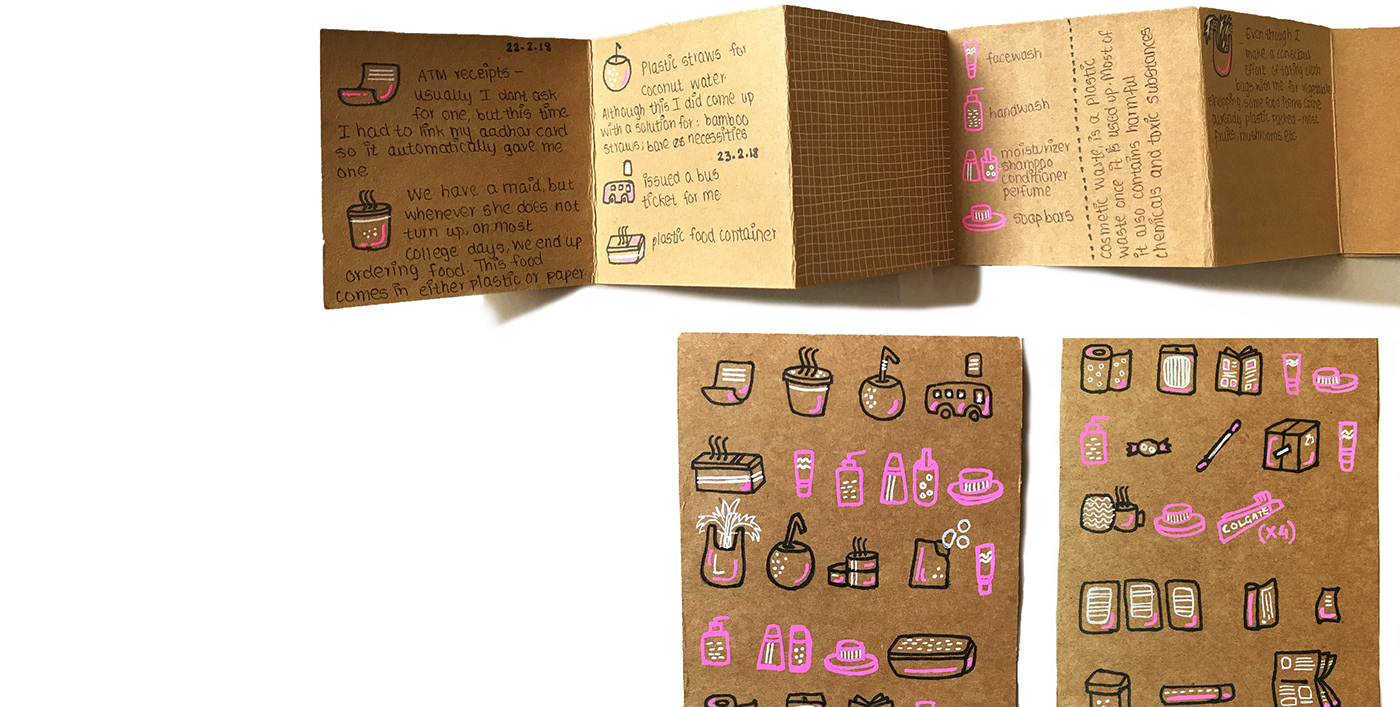
Thinking about the impact that I wanted to create, I realised that I could not leave a deeper impact on people, unless I have a meaningful one on myself. Taking the same philosophies of self-sustainability and waste management, I started mapping my own waste. What kind of things I use, what is necessary and what could be avoided. Practicing this for a week, I realised that maximum waste that I produced was in fact paper waste. Apart from paper in the form of bills, tickets and newspapers, as an illustrator and a visual designer, the maximum material that I used and wasted was paper in the form of rough sketches, test prints, doodles etc.
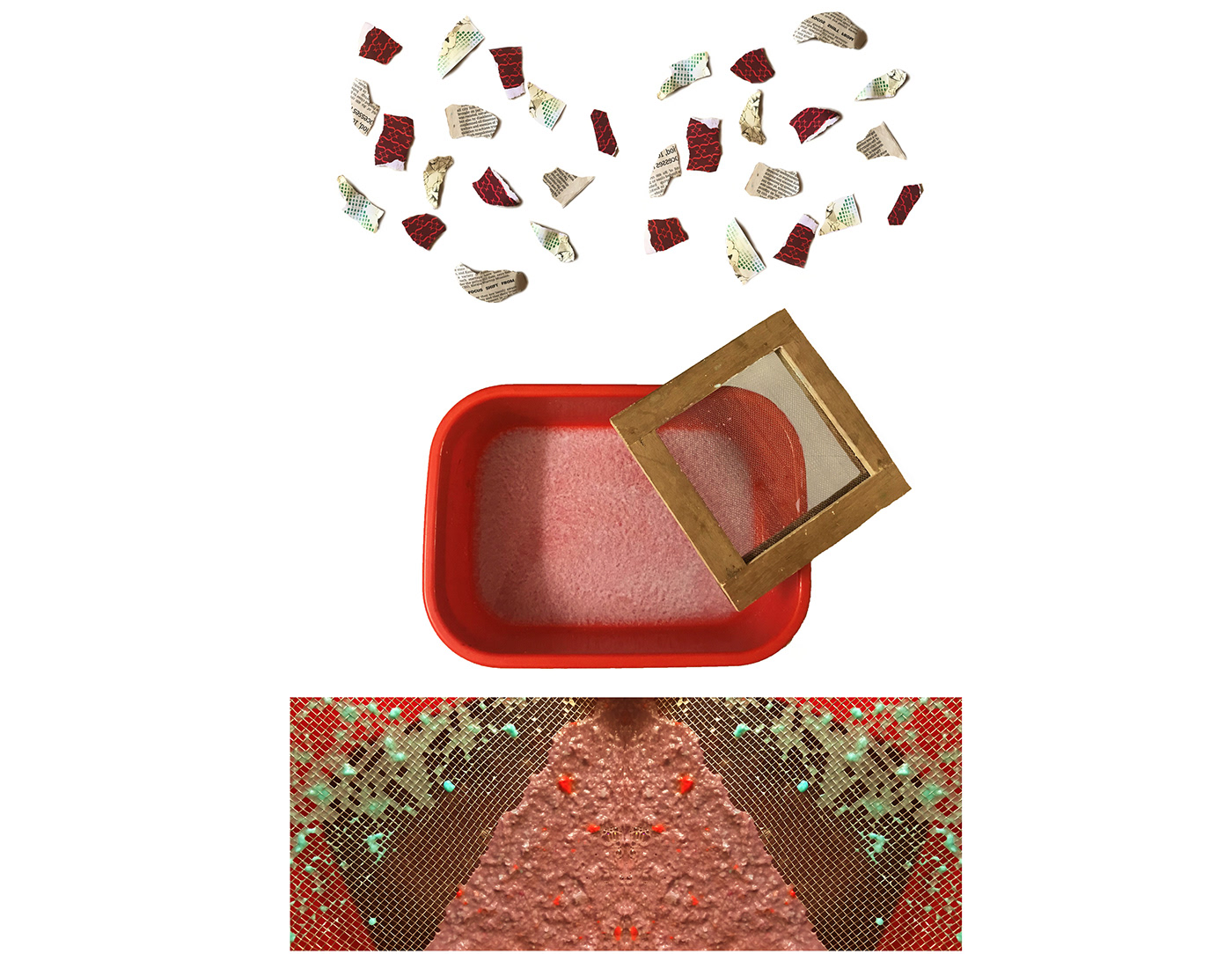
By monitoring excesses like paper, cloth and plant fibre, I planned to recycle and up-cycle these resources while portraying different aspects of the life in Chherna, thus completing the cycle.Till eighth semester, each book that I have ever created has undergone so many initial changes, each of which required test prints before the final printing. I started by using my big stack of printed sheets. Followed by cutting them into small pieces, grinding them in a mixer to create a paper pulp and then creating new paper by using my mould and deckle. I used acrylic paints, to add colour to the pulp. In this process, I was getting rid of my waste while making myself self-sufficient and avoiding approaching the market to buy more paper.

I created paper samples by experimenting with colours and even materials. I also used some collected material from Chherna like dried flowers to give it an essence of the place. After trying with paper pulp, I also experimented with pineapple leaves lying around in the house. These leaves are formed of rich fibre that is quite strong in itself.
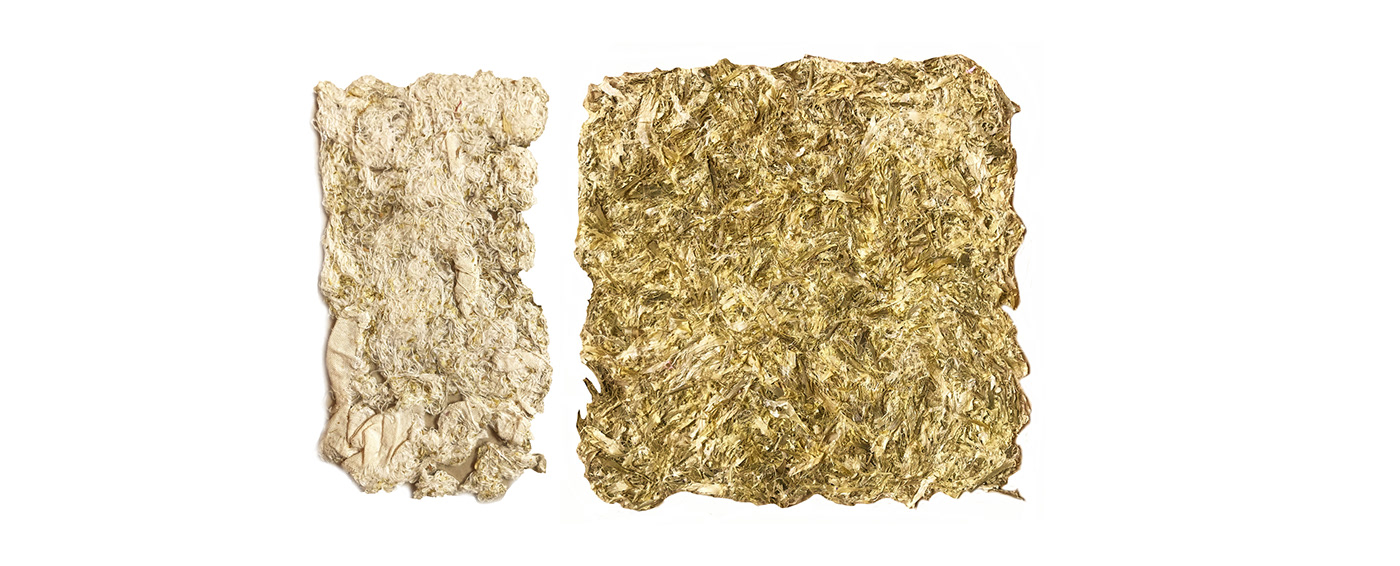
I got a good result with the pineapple leaves, however the one with cotton threads turned out to be overly fragile.

Once my paper samples were ready, I started replicating landscapes of Chherna by layering these samples and digitally drawing over them. It involved two to three rounds of layering-scanning-drawing-photographing and again layering. This process was quite intuitive and gave me some really interesting results.

I further experimented by creating stories through frames. Taking a simple phenomenon of a snow fall, I used the handmade paper to depict the different stages of snowing.

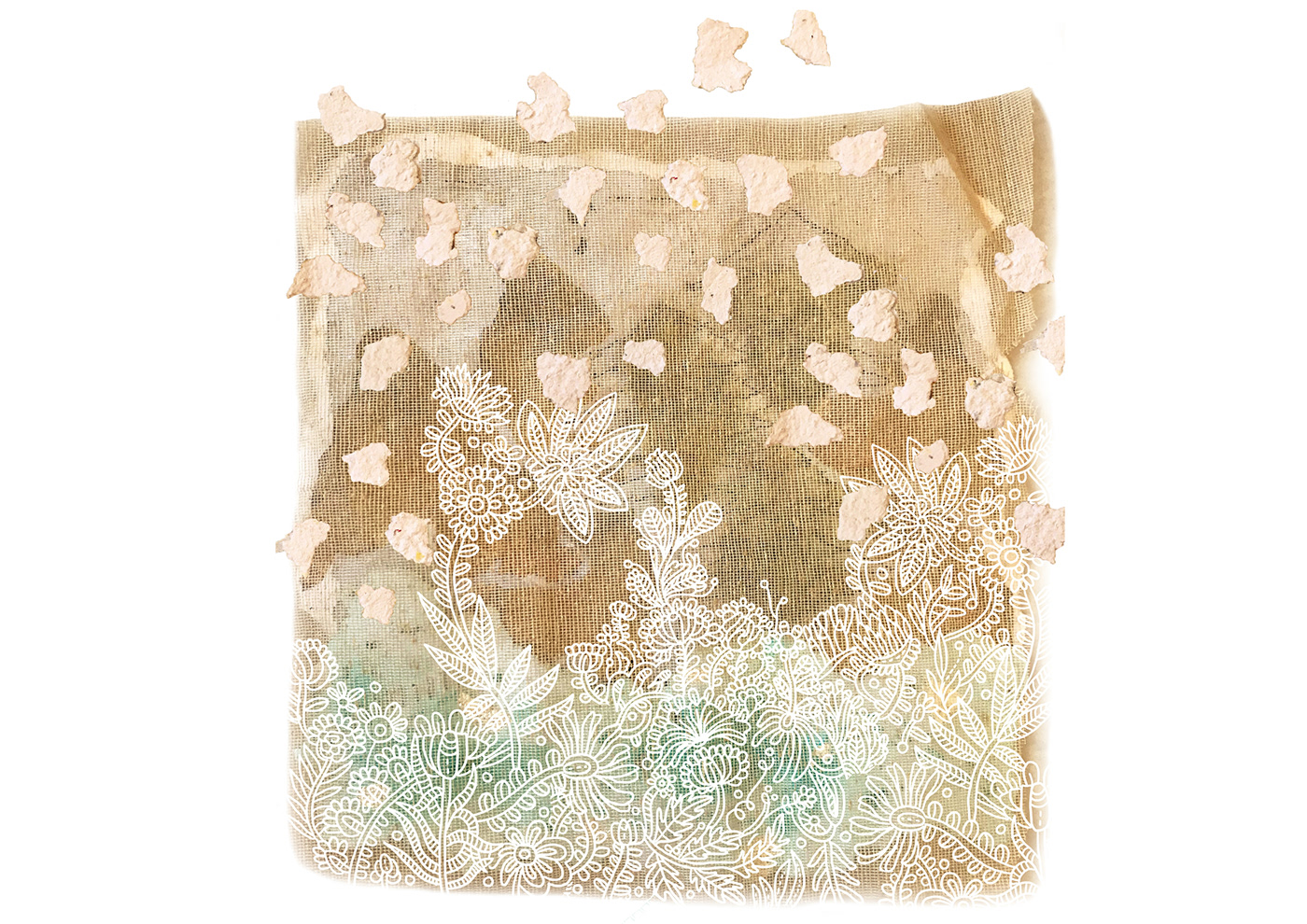
I also experimented by digitally manipulating the paper bits and digitally drawing over the artwork. This process facilitated the addition of complexities to the otherwise flat illustration. I also tried using the objects that I collected over there like the flowers, to give an essence of the place.
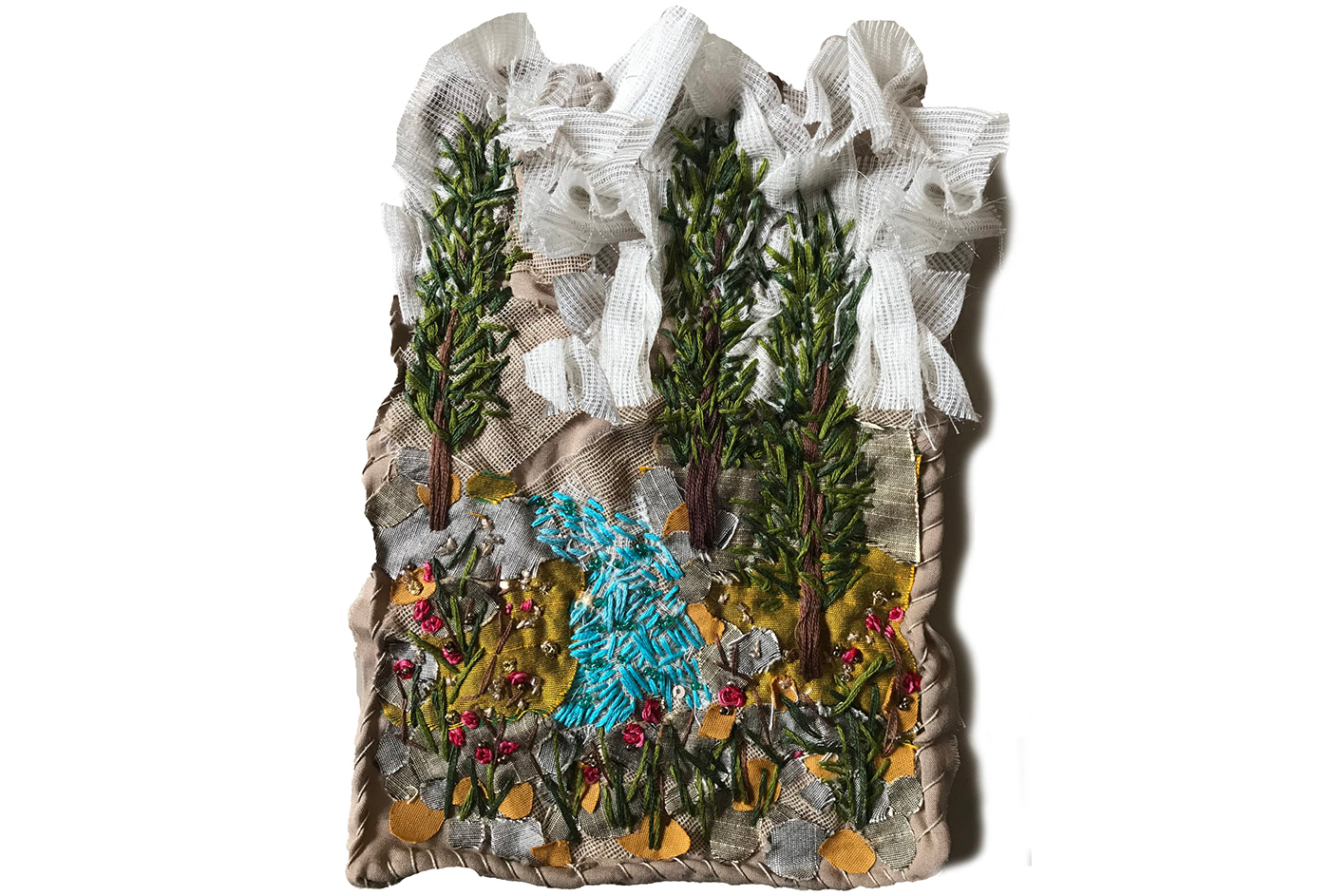
Apart from paper, I tried creating landscape using scrape fabrics. Giving it more of an abstract look, I created an art piece using embroidery and techniques of fabric manipulation. I even tried embellishments to give additional details.
FINAL OUTCOME

‘The Paper Village; A Walk Through Chherna', is an accordion artefact inspired by the people of Chherna. It is an attempt to imbibe their philosophies of self-sustainability and minimal wastage into my own ideologies. By up cycling excesses like paper waste, I have portrayed different aspects of Chherna through mixed media artworks. The artworks included in this accordion are completely hand made using the techniques of embroidery, textile manipulation and line drawings on upcycled hand-made paper.
The accordion book portrays various aspects of the lives of the people of Chherna. Starting from a zoomed out frame, the accordion ends in a zoomed in frame, giving the audience an essence of the six days that I spent in this village.
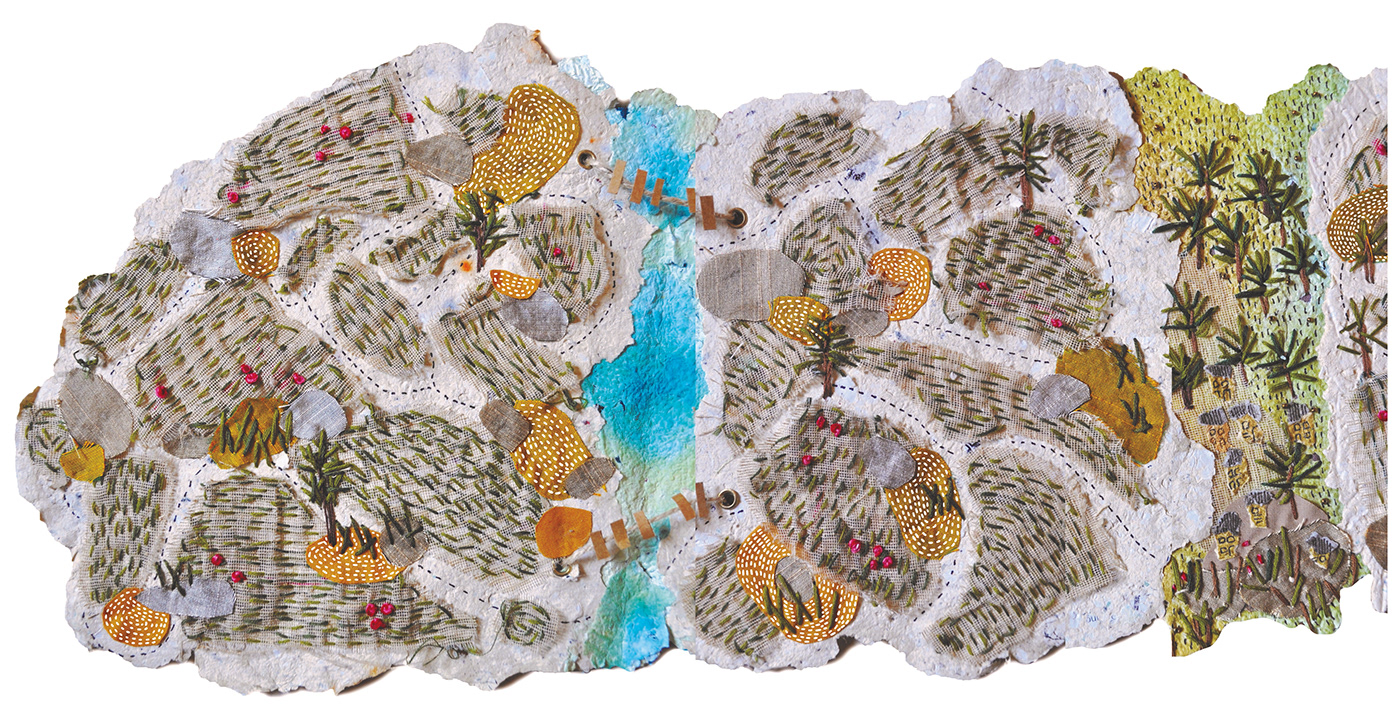
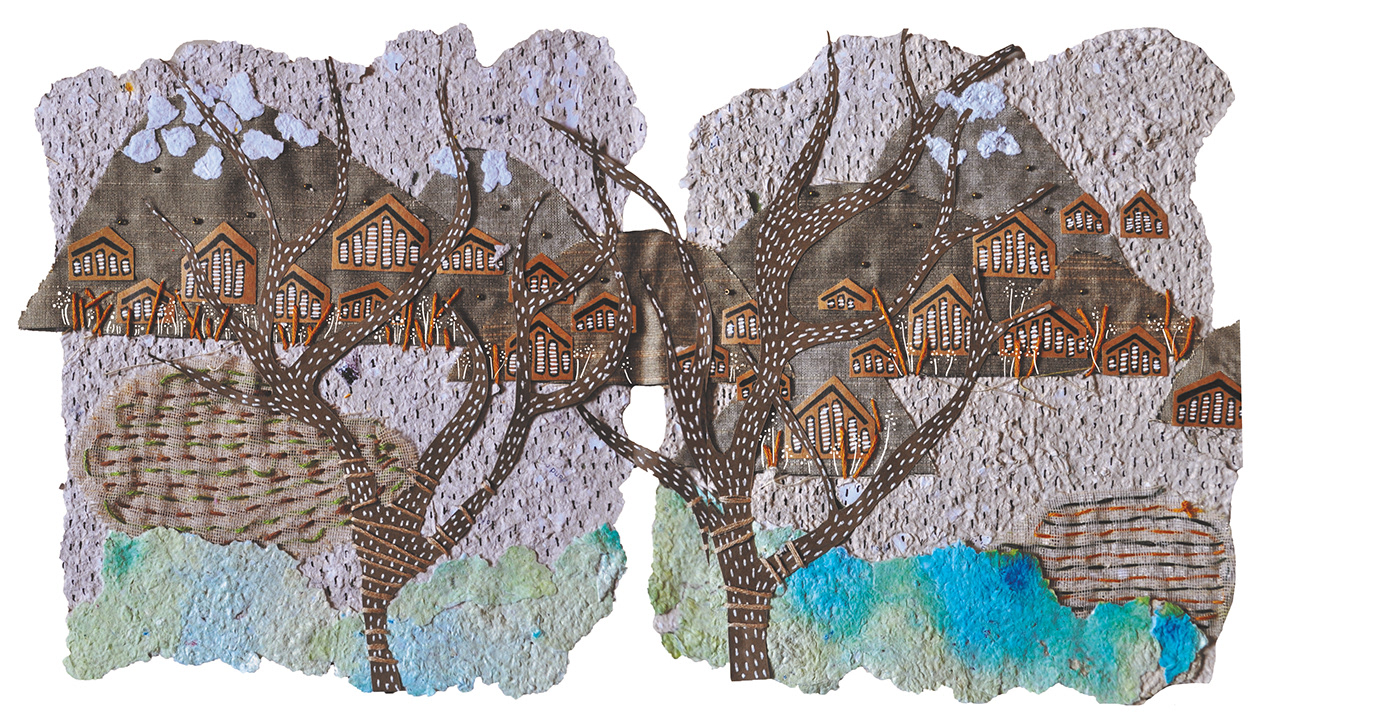




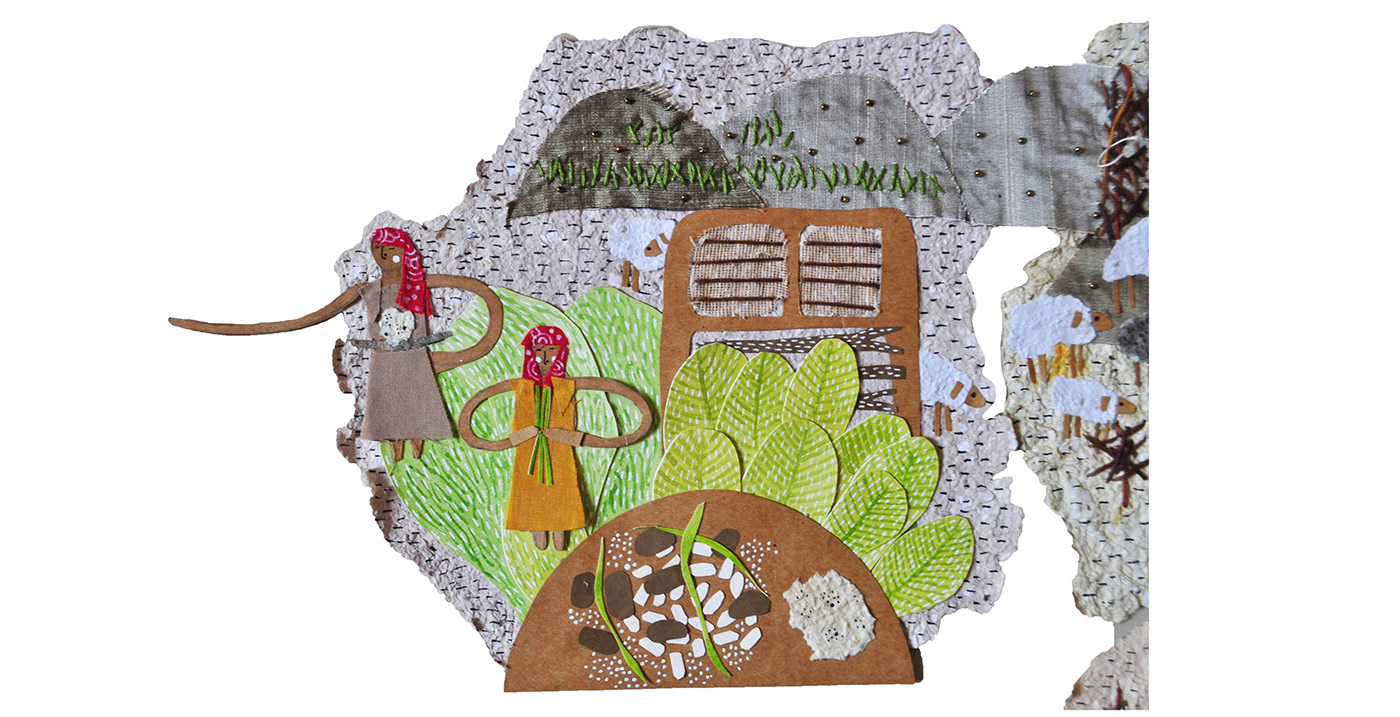


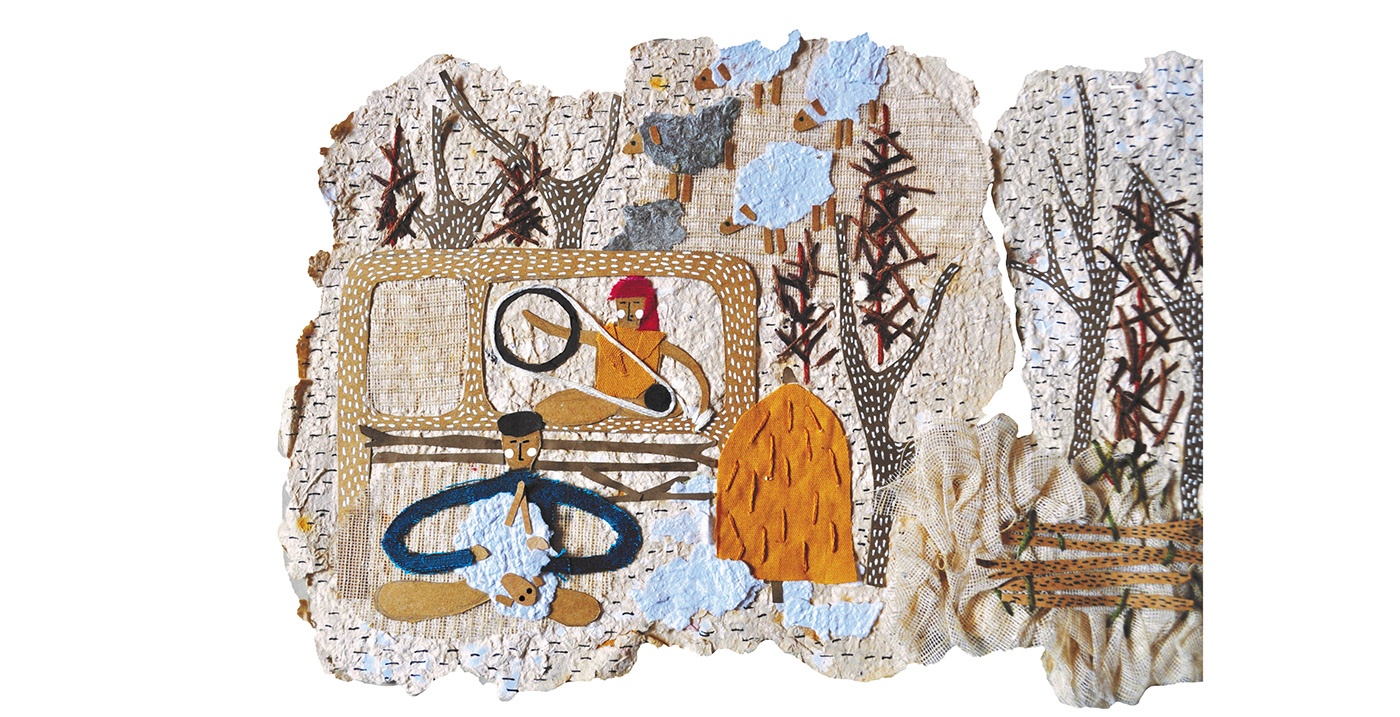

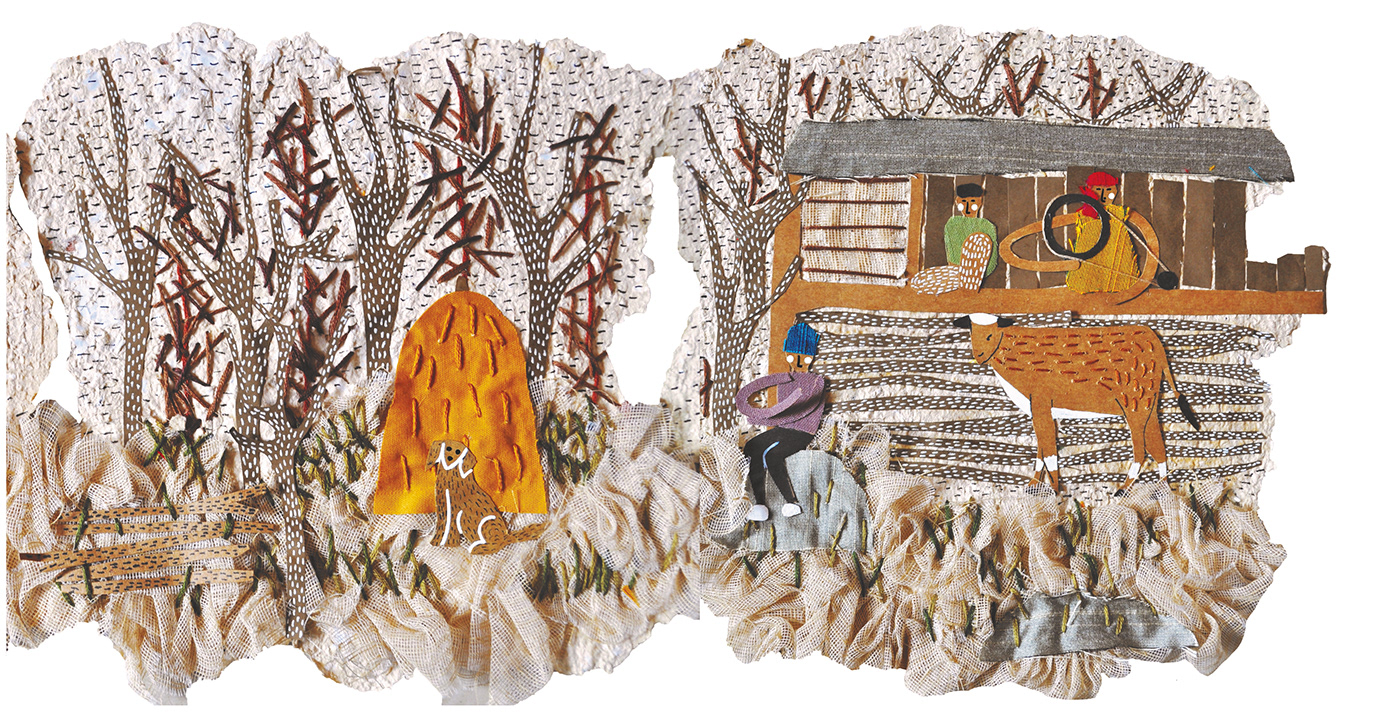
In order to make this artefact accessible to everyone, I scanned the artefact and created two sets of digitally printed accordion books. Since I did not want the books to lose the essence of the original artefact, I tried to keep it as similar as I could. The way it opens, the way a page looks, the way the folds are placed, all these details have not been compromised upon.

Digitally printed versions of The Paper Village
THE END.






